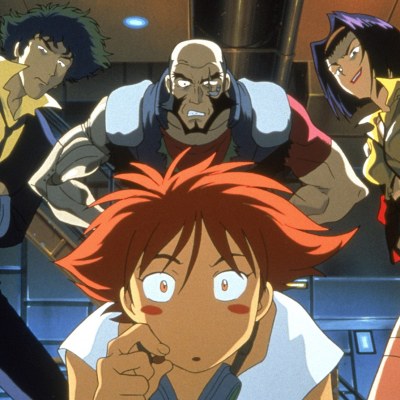Why Netflix’s Cowboy Bebop Doesn’t Work
Netflix’s live-action take on the classic anime gets practically everything wrong.
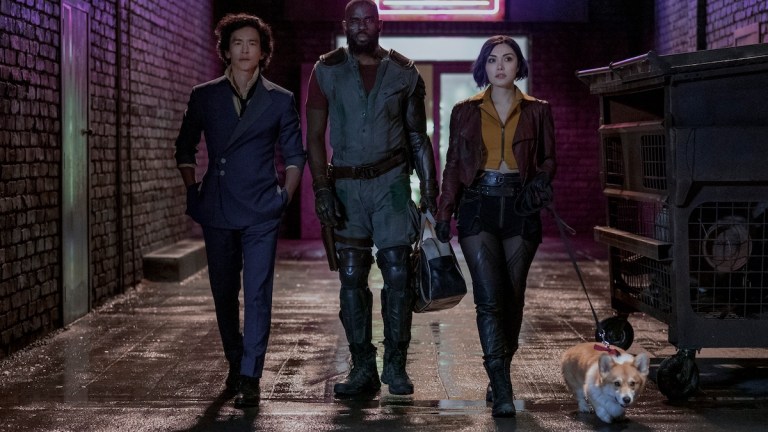
This article spoils much of Netflix’s live-action Cowboy Bebop adaptation as well as the original anime series.
Stop me if you’ve heard this one before: Cowboy Bebop, the anime directed by Shinichirō Watanabe, is what got me into anime. The series was and remains a great gateway title for numerous reasons. The beautiful, high-quality animation looks as awesome now as it did when it premiered in 1998. Yoko Kanno’s jazzy soundtrack swings so hard that people who don’t normally listen to jazz find themselves downloading the soundtrack (guilty!). Also, for English-speakers, the dub is so good it’s widely accepted as being as valid as the original Japanese.
However, probably the main reason many people take to Cowboy Bebop so easily is that it speaks in tropes we’re all familiar with. Though animated and sci-fi—set in a dystopian future in which humans have colonized the planets and moons of our solar system—Bebop mostly cribs from classic cinema, primarily Westerns, noir, gangster, and kung-fu films. It feels familiar because, even if you haven’t seen any of the films Bebop takes direct inspiration from, you’ve almost certainly seen the conventions these films established pop up in other films and shows. Not only that, a new viewer to Bebop today might very well find familiar parallels to modern productions, as there are now creators whose work is inspired by their growing up with the show (for example, Knives Out and Last Jedi writer-director Rian Johnson, whose first feature-length film Brick stars Joseph Gordon-Levitt as a teenage detective heavily inspired by Bebop’s leading man).
Furthermore, it’s not like Cowboy Bebop is lost media from the past. A Blu-ray collection of all 26 episodes is readily purchasable for around thirty bucks. And if you want to stream it, you can buy it on Amazon or watch it with a subscription to Hulu, Funimation, or even Netflix themselves (they recently added it).
In other words, Cowboy Bebop is an accessible anime to this day, both in terms of its content and availability. So, when it was announced that Netflix would be producing a live-action adaptation, you probably had the same question I did: why? Why take something that’s still cool and novel because it’s an Eastern, animated pastiche of Western, live-action cinematic tropes and redo it as a Western live-action production? What’s novel about that?
When Netflix released their recreation of the show’s opening titles set to Yoko Kanno’s iconic “Tank!” it featured much of the same imagery from the anime, except that movement that was cool in animation looked stilted and awkward when performed by real people. I was starting to get concerned we’d be getting a shot-for-shot Cowboy Bebop recreation that just looked lamer.
It turns out I was needlessly worried. Netflix’s live-action Cowboy Bebop remake is almost wholly its own animal. True, the protagonists are still bounty hunters driven by a need to eat. Yes, John Cho as Spike Spiegel wears a suit very much like anime Spike and Mustafa Shakir is doing a solid Jet Black cosplay. Yoko Kanno is even back to compose the music! The ten episodes (which vary in length from 40 to around 55 minutes) cover a number of the same major story beats that ran through the anime, too.
However, in execution, the path to those beats deviates so drastically in style, pacing, and tone that it’s difficult to feel the pulse of the work that inspired this adaptation beating underneath it all. Netflix took Cowboy Bebop and used it as a springboard to create something that decidedly stands apart from the source material.
It’s also really bad and should never have been made. Here are some reasons why.
The Look
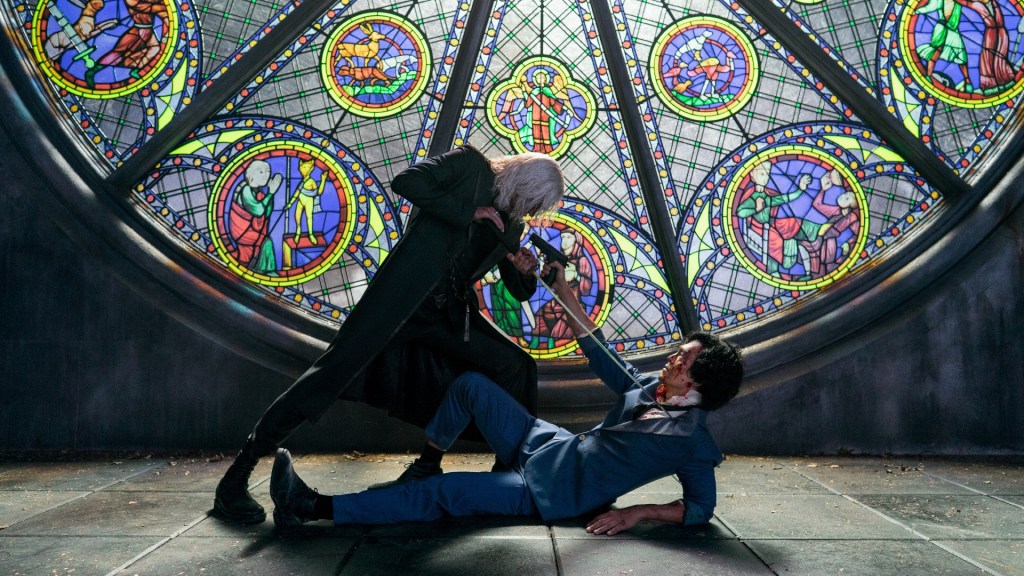
Cowboy Bebop the anime looks like a high-budget animated series with cinematic shots and slick editing. Cowboy Bebop the live-action Netflix series looks like a mid-to-low-budget, Netflix sci-fi series. If you were curious about how Netflix, in jumping from animation to live-action, handled the drawbacks of this change and made use of its strengths, well, they didn’t.
Showrunner André Nemec told Den of Geek that his team looked at the live-action media that influenced the animated Bebop, “the Sergio Leone films, the noir pictures.” There is no evidence of that in the final product.
One episode is a retelling of the original show’s “Black Dog Serenade” which is the “noir” episode and it’s content to signal this by slapping on a sepia filter. There are also very sporadic recreations of iconic shots from the anime (like Vicious and Spike in front of the cathedral window), assumedly included with the thinking that they had to at least get those shots in there, lest the otaku rise up and storm Netflix HQ.
Other than that, Cowboy Bebop looks like a Netflix Original sci-fi series. To give the appearance of an otherworldly future, CG is liberally applied all over. Sometimes it’s used to pepper the background with spaceships, sometimes it accentuates a sound stage set that otherwise looks something like a makeshift playground for adults, and sometimes environments are built by computer out of whole cloth. It all looks sleek, sterile, fake, and boring. Did you watch Netflix’s Altered Carbon? Then you have some idea what Cowboy Bebop looks like.
This is selling Altered Carbon short, however. That series had a sense of its own identity and an art department working with a guiding principle of how its universe should and should not look. Bebop—stuck between being a lowish-budget Netflix sci-fi show and an alleged homage to the most stylized anime ever—looks confused, like a Netflix sci-fi show starring people in goofy cosplay.
The Setting
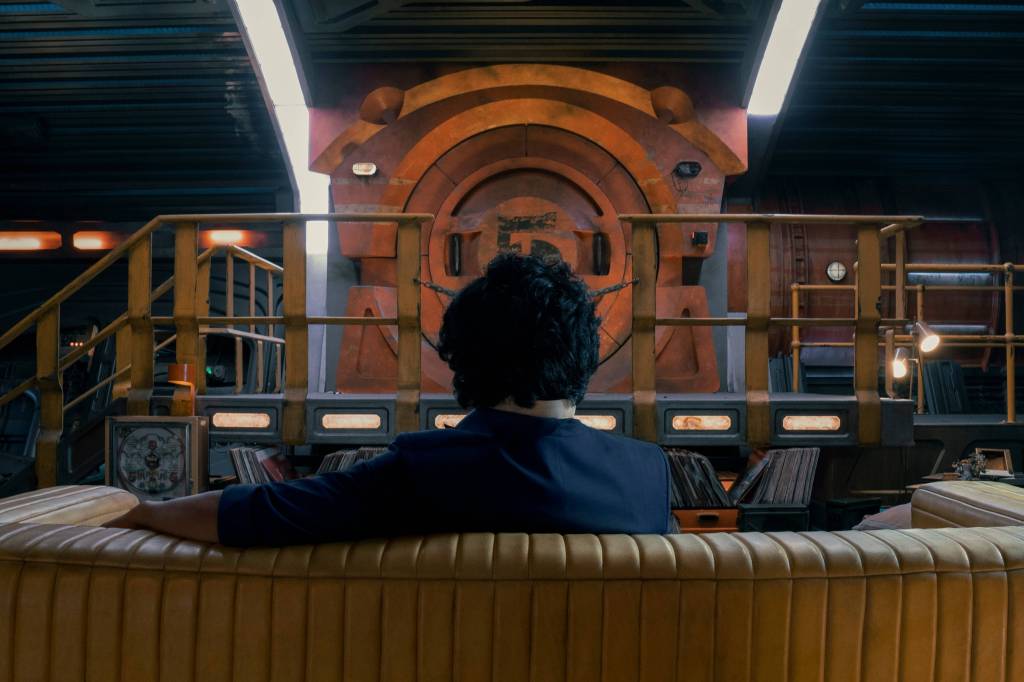
Cowboy Bebop frequently fails to convince that it all takes place in the same universe. In the anime, environments are typically urban, desert-like, semi-derelict, or some combination of these. Depending upon which planet, moon, or space station the crew visits in an episode, you get a somewhat different aesthetic, but it’s all believably part of the same era and solar system.
Not that the Netflix adaptation had to copy this setting exactly, but it doesn’t make much effort to establish any kind of look at all. Some locations are all CG’d up, while others barely look like anything was done to differentiate them from present day. In one scene in which Jet goes to visit his ex-wife (he has an ex-wife now), the sun is shining through the window and the hedges are green and well-maintained. It looks like your average suburb in Anytown, USA. You’d forget you were watching a show about the future, except there happens to be a dude with a robot arm standing in the living room.
It feels like the fact that this is a show with the solar system as its backdrop was a burden for the creative team. Though the spaceships are generally some of the best-looking CG, you rarely see them aside from when they’re taking off and landing. Remember the awesome space combat sequences from the anime where the ships flipped and spun like they were doing choreographed dances and patterns of bullets created designs in the sky? Well, there are literally no sequences of dogfighting ships in Netflix’s Cowboy Bebop. That’s right, not a single space battle and nary a star war.
The Tone

Borrowing from action, western, noir, sci-fi, comedy, and occasionally horror, Cowboy Bebop the anime is a smorgasbord of genres. It’s impressive how it honors all its influences by borrowing and distilling tropes to their most powerful elements, while combining them to create something altogether fresh. The series is above all a tragedy, and tragedies run on melodrama, so it takes familiar conventions and then lays the emotions on so thick you can’t help but feel something.
Netflix’s Cowboy Bebop does this too, if you count confusion as an emotion. What’s the tone of the live-action adaptation? Good question!
Perhaps to keep you from clicking away to instead watch the anime (reminder: now also available on Netflix), the first episode is edited and scored at breakneck pace, jolting awkwardly from mood to mood, as snippets of new renditions of Yoko Kanno’s classic tunes pipe in for about fifteen seconds apiece only to be abruptly discarded and replaced by further such snippets. Technically, all this tone-switching is, in its way, in the spirit of the anime, but it’s artlessly done. It feels like an hourlong trailer, smashing action and comedy up against sad moments, all the while familiar music cues prod you, asking, “Hey, remember this? How about this?”
Then there’s the violence. The anime can certainly get ultraviolent at times; some episodes are emulating the body count of a gangster or John Woo flick, while others go for the jugular with unsettling sequences borrowed from horror films. Netflix’s Bebop has reinterpreted this violence as gore and light torture porn and, where the anime does a good job of compartmentalizing its horror, the live-action throws it in at random.
It’s grim stuff that seems to be in there for the sake of fitting a “gritty prestige television” standard. There will suddenly be a horrific scene of Vicious (Alex Hassell) and his cohorts gunning down a room of defenseless naked people in slow-motion. Or a graphic torture sequence of someone getting their teeth pulled out. It all technically fits for a series with characters who are (or were) part of a crime syndicate (typically simply referred to as “The Syndicate” in both the anime and the live-action), but the way the series wallows in these moments indicates a misunderstanding of both the popcorn flick violence of the anime, as well as its horror moments.
The original series has its fair share of comedy, but that’s generally some of its weakest material. That said, it’s far preferable to the sense of humor in the live-action series. For a show that had a lead character strutting around in a near-nude outfit, the anime is surprisingly chaste. The Netflix rendition, however, is practically obsessed with sex and bodily humor.
If you love jokes about fisting, bidets, pube-shaving, and bukkake, have I got the show for you! How about a scene in an S&M club hilariously punctuated by a mistress character whipping a leather-clad submissive with a riding crop? Or a protagonist (Daniella Pineda as Faye Valentine) who regularly spits out such zingers as “dickwads,” “nutbags,” and “nutbuckets?”
This is not at all in the spirit of Bebop and, like the violence, is forced and crass.
The Characters
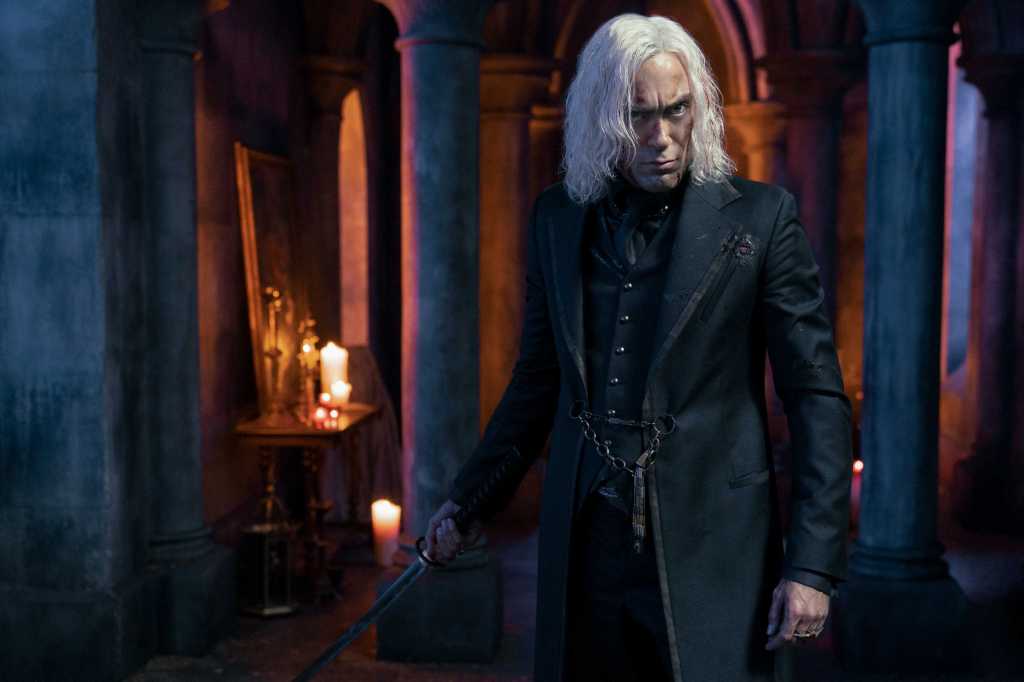
The characters in Cowboy Bebop, the anime, are thin. They’re sort of supposed to be though; in a series that’s a collage of cool cinematic tropes, the characters are less people than they are archetypes. Spike is the detached loner with a dark past and a heart of gold; Jet is a former cop cast out by a corrupt system just trying to live by some kind of code in a messed-up world; and Faye is the femme fatale. The series is about these familiar, cool characters doing familiar, cool things or, alternatively, surprisingly subverting their archetypes (e.g., Faye is sexiness incarnate, but she’s a rude slob).
That said, even if the characters are more concepts than people, Bebop excels at wringing emotion out of you and making you feel for those concepts. Often this is done through one-off characters; you typically get to know the bounty our protagonists are after better than you know our protagonists and most episodes end tragically, with no bounty caught (something the Netflix series does adhere to). You sense that Spike, Jet, and Faye—though they put up cool fronts—are affected by these tragedies and, as they pile up, you come to see them as tragic figures, too.
This is reinforced by the handful of episodes that delve into their pasts. You never get enough backstory to paint a full picture of who any of them are. You only get glimpses, but they’re enough to make you sympathize with them more and understand them a little better.
We were told the point of the live-action Cowboy Bebop was to dig into these characters deeper to understand them even further. One might argue that expanding on characters who were never more than collections of tropes appended with some tragic footnotes is an inherently misguided idea and it turns out they’d be right! There are many more scenes of people standing around and chatting in this version of Bebop, but, at best, they don’t teach us anything we didn’t already know and, at worst, they muddle who these characters already were.
Anime Jet is grizzled, world-weary, controlling, and tries to live by his moral code. Live-action Jet is a bit grizzled, but he looks too young and he’s world-weary because he calls people “smart guy” sarcastically. Maybe he has a moral code but it’s murky because of moments like him and Spike laughing about how hilarious it was when they killed a guy who didn’t want to die.
Anime Faye is sultry, obnoxious, seemingly selfish, and lonely. Live-action Faye fares better than live-action Jet, though the femme fatale side of her character is mostly gone. This rendition of her focuses more on the lost and lonely “woke up alone with amnesia” aspect, so she’s played and written more like a naïve girl. She’s still obnoxious, ticking Spike and Jet off regularly, but feels more like a little sister than a selfish, brassy woman. It’s a different interpretation of the character, but not an invalid one.
Read more
Anime Spike is cool, independent, charming, and mysterious. Live-action Spike sucks. He looks bored most of the time and much of the blame for that lies at John Cho’s feet. Maybe it was an acting choice, but it truly seems like he doesn’t want to be there. He also has no chemistry with Mustafa Shakir, which is unfortunate because the series features many a painful dialogue sequence of these supposed best buds ribbing each other.
The anime’s main antagonist, Vicious, and love interest, Julia, were even more thinly-drawn than the protagonists. We’re never meant to fully understand them as characters as their function is primarily to act as forces influencing Spike’s character arc. As such, we see very little of them.
In Netflix’s rendition, Vicious and Julia (Elena Satine) are married and there’s a lot more of them. Vicious was violent and power-hungry in the anime and he’s much the same here. All we’ve really gained are unpleasant new scenes of him threatening and abusing Julia. Also, giving him more screentime inevitably diminishes him as a malevolent force because of his ridiculous outfit and hair.
Amazingly, Julia, with her vastly increased screentime, actually becomes a less complex character because she spends almost the entire season being a victim. In the anime, we don’t ever truly know what motivates her and she seems, possibly, out for herself more than anyone else. The live-action all but removes her agency. She’s just a poor girl who ended up in a bad marriage that she’s waiting to escape.
Okay, yes, at the very end, Julia reveals she was vying for the top Syndicate spot all along, making her far eviler and more conniving than we were led to believe, but this is a sharp, unearned, turn for her character. For the bulk of the season, she’s a victim and it’s uninteresting and no fun to watch.
That said, Alex Hassell and Elena Satine do the bulk of the heavy-lifting acting in this series and, of all the principal characters, they’re the most convincing. That doesn’t make up for the fact that they’re in scene after scene of Julia being terrified and Vicious being an evil prick.
The Story
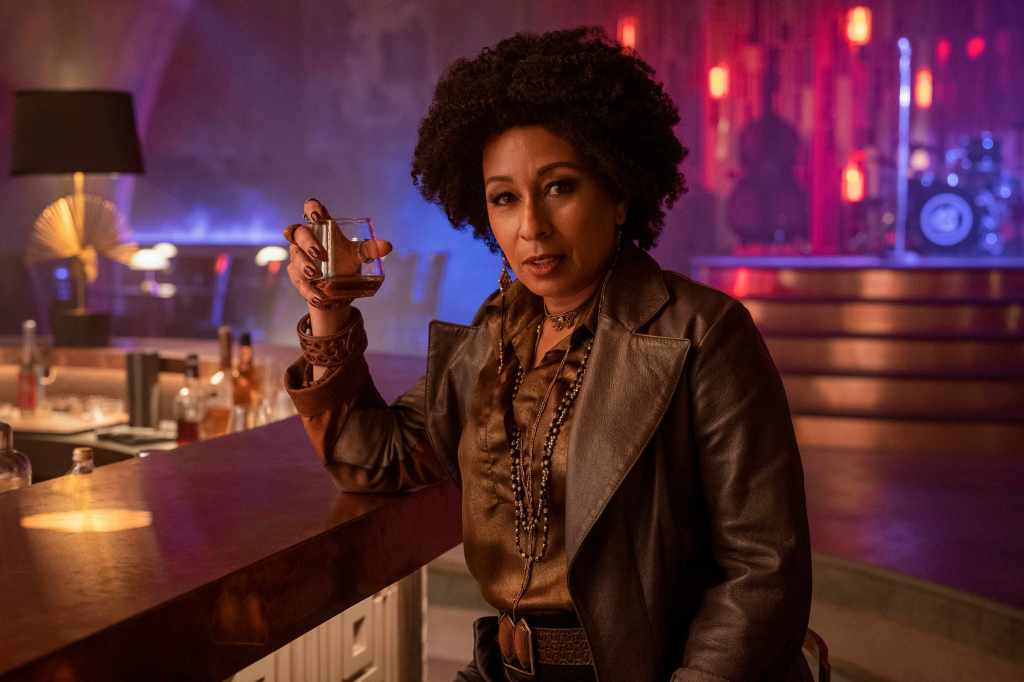
The story of Netflix’s Cowboy Bebop is broadly the story of the anime: Jet has a sad cop history, Faye has amnesia, Spike’s criminal past is catching up with him, and they’re all bounty hunters together.
The big difference is that, in the anime, we only occasionally delved into the protagonists’ pasts while, in the live-action, that business is front and center. Spike’s Syndicate past is already coming back to get him from episode one and Faye is up front about how she’s trying to track down any information she can about her origins. Jet’s cop stuff is a little more present too, as it’s hard for him to ignore it because his ex-wife is dating a cop named Chalmers (if you can’t help but associate that name with The Simpsons, you’re not the only one). Vicious also technically had an arc in the anime with his violent coup to become head of the Syndicate, though it was told sparingly. Here, he spends nearly the entire season plotting and executing it.
It’s amazing the runtime of these episodes is double what it was in the anime and yet far less is communicated. The events that happen in the anime just happen again but in slow-motion. They aren’t made more complex or more interesting; they’re just longer. It’s not interesting to focus more on Spike’s past when all the scenes about it still only tell us “Spike’s past is coming back to get him.” It’s not interesting to devote more screentime to his romance with Julia if all we know about it is still “Spike really loves Julia.” It’s not interesting to learn the machinations of Vicious’ coup when all they amount to is “Vicious is still planning his coup.”
After a while, it starts to feel like the purpose of almost every scene is to tread water. Everything seems to be written with the goal in mind of padding out the runtime so this mess can be ballooned into two seasons. It tells half the story in twice the time.
Sure, the ending—which in the anime was the ending of episode five—is different. This time, instead of being chucked into it by Vicious, Spike goes smashing through a cathedral window because Julia shoots him for no good reason (except to mimic the iconic falling sequence from the anime). But this is part of her aforementioned sudden and unearned character development that comes after a whole lot of blah.
The Music

Yes, the brilliant composer Yoko Kanno of the fantastic anime soundtrack has returned to write the score. However, her involvement only elevates the proceedings the slightest bit.
Rewatch the anime and you might be surprised by how often it’s content to leave the soundtrack silent, which only gives it more weight when music does kick in. Most episodes are characterized by only a few tracks accompanying specific scenes and you generally get to hear most of or even the entirety of them.
In this version, there’s far less silence with new renditions of classic tunes piping in and out briefly and frequently. They’re there, they’re familiar, and they’re gone. Many other music cues have none of the usual jazzy Bebop vibe nor are they ever as enigmatically weird as some of the anime’s eclectic fare.
Still, there are several longer, brand-new jazz jacks you don’t get to hear much of, but awesome, full-length versions of them can be found in the official soundtrack Netflix has mercifully released to streaming services, so at least there’s that.
You’re Gonna Carry That Weight

Netflix’s live-action Cowboy Bebop remake at first seems like a strange interpretation of the anime. However, over time it reveals it has little interest in living up to the original and is simply fulfilling the requirements needed to fit the Netflix Original two-season series model. Presumably, one fateful day the Netflix algorithm commanded: “BEEP-BOOP! COWBOY BEBOP REMAKE = $$$!” and the rest followed from there.
All the pre-release info about this remake now rings disingenuous. We’d been told that, from the actors to the crew, there were superfans of the anime working on this, that they believed there were more stories to tell in the Bebop universe, and that they made a point of drawing from the anime’s cinematic inspirations. In actuality, all this remake appears to be inspired by is other Netflix shows.
It only makes sense to compare a remake to the original but, if I try to separate it anyway and assess this on its own, it would still be a tonally-confused, low-quality show. This is Netflix chaff. This is the kind of series they shovel into the web en masse that quickly and quietly disappears into the folds of their impossibly vast show catalog. Unfortunately, it’s Netflix chaff that happens to share its title with one of the best anime series ever made.
